How to start a project to design an autonomous mobile robot? What skills are needed and how do they fit together? What are the constraints and points to watch out for? Like any product development, a robotics project requires a
How to start a project to design an autonomous mobile robot? What skills are needed and how do they fit together? What are the constraints and points to watch out for? Like any product development, a robotics project requires a
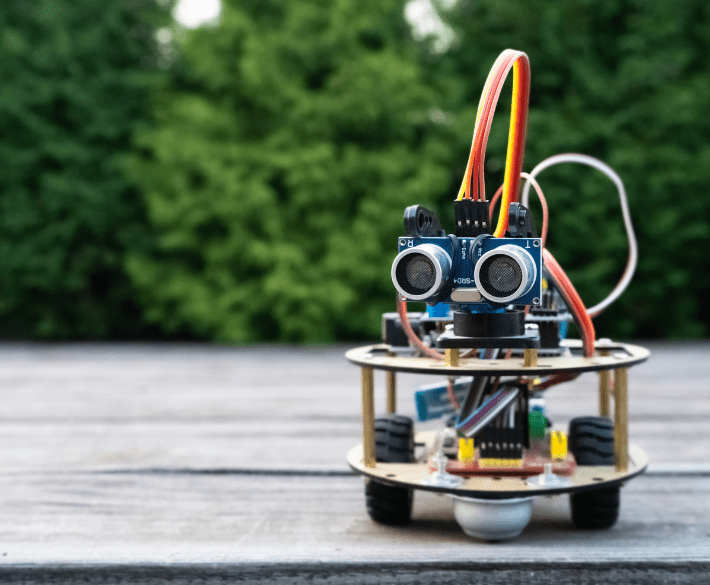
How to start a project to design an autonomous mobile robot? What skills are needed and how do they fit together? What are the constraints and points to watch out for?
Like any product development, a robotics project requires a great deal of precision and expertise to successfully complete its development.
In this article, we have put together our knowledge and experience feedback to optimise a project requiring a certain number of skills.
Intended to operate as close as possible to humans, autonomous mobile robots are equipped with advanced technologies that allow them to move in total autonomy, avoid obstacles and interact with their environment.
Thanks to their flexibility, they can be adopted for various purposes: welcoming, accompanying, serving, increasing productivity, improving logistics, etc.
To be successfully integrated and to save time and efficiency, your mobile robot must be reliable and secure.
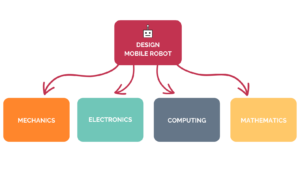
A project involving many skills can be complex. To make the most of them, our key advice is to create links between them.
Indeed, they are intimately linked to guarantee the viability of your robot, but not only… Creating a real dynamic between them will enable you to ensure the smooth running of your project, limit design times and control your budget.
To facilitate this co-construction work, there is a step that should not be neglected. The definition of the functions that your robot must fulfil.
This step, which we call Think, will allow you to have a global vision of your project and will facilitate your decision-making regarding the choice of technical elements. We invite you to discover our approach in this article.
From there, you can carry out a functional analysis and then identify the areas in which the various players in your project can work.
Before starting the design stage and to accompany you throughout, our robotics experts have put together a special checklist for you:
⭐ Co-construct your robot. Each of the trades that are going to intervene must learn from the context of the other in order to merge all your skills and make the most of them. In concrete terms, build the development phases by planning synchronization times between the different business teams and plan for a project leader who is concerned about making the link between the different business lines.
⭐ Be aware of your weaknesses. Running a robotics project requires a certain level of skills, knowledge and equipment. For each element of your project, make sure you have the necessary resources. Identifying your strengths and weaknesses beforehand will prevent any weaknesses from having a negative impact on your project. Don’t hesitate to surround yourself with outside eyes if necessary.
⭐ Use the Kiss -> Keep it simple, stupid method. Encourage simplicity throughout your design work to avoid non-essential complexities that may lead to errors, difficulties in use, costs and maintenance. For example, in the case of functionality, there is a tendency to believe that the more features our product has, the more it will be adopted by users. However this will actually make it difficult to use. If the basic concept of your product is not working, rework it rather than adding new features.
⭐ Consider its environment. To ensure that your autonomous mobile robot is effective and safe, throughout the project you will need to orient your choices to the environment in which it will operate. Before you start designing, map out the various constraints you will have to meet (standards, safety, use, ergonomics, etc.). For example, if your robot is to be used in a medical environment, it will have to comply with strict regulatory and clinical standards, meet major safety issues and not interfere with the signals of other equipment present.
It must also not interfere with signals from other equipment in the environment. It must also not represent a danger to patients and medical staff.
Now… Let’s move on to the step you’ve been waiting for and discover the key skills to design your mobile robot as well as some inspiring examples of innovative mobile robots!
How will your idea materialize in physical form? What will your robot look like and how will it perform its functions? It is the role of mechanics to answer these questions.
Based on the identified needs, we must define the solutions and technological bricks necessary to build your prototype.
Once the architecture has been created, it is time to model your autonomous mobile robot.
The mechanical design includes several elements such as the structure of your robot, the actuators, the sensors, the HMI (Human-Machine Interfaces) or the aesthetic plastic shells.
These elements must be carefully defined for the proper functioning of your product.
As the real skeleton of your robot, the architecture must be reliable to allow the robot to stand upright, move correctly and perform the functions required of it.
Moreover, your robot is intended to operate in an industrial or human environment. It must therefore adapt as well as possible to its environment and not represent any safety risks.
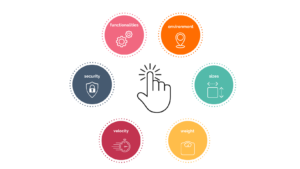
Throughout your choices, keep in mind the global cost of your project.
In order to arrive at a competitive price, a price study is necessary.
This study can take into account different factors such as the processes used, the choice of suppliers, the choice of materials and their quantity, the cost of tools etc…
The study of these costs will guide you in your choices and in the selection of the technical elements which will constitute your robot.
💡Inspiring focus: Balyo’s intelligent handling robots
The French company Balyo specializes in the robotization of standard industrial trucks. Equipped with perception sensors and robotised via a localization algorithm, the company transforms these carts into autonomous robots capable of moving around logistics centers in complete safety.
The hardware part of your robotics project is divided into two parts: the assembly of the electronic components and the design of the electronic board from these different components.
During the design of your robot, the choice of the power supply of your robot is not to be taken lightly. Indeed, the power supply is the heart of your robot, without it it will not work.
To define the power source, identify if your mobile robot is intended to be autonomous or on the mains and how it will recharge.
To choose the battery, you must take into account: capacity, voltage, intensity, volume, power, etc. The remaining space and the imposed dimensions will also be determining for the choice of the type of battery to adopt.
💡Inspiring Zoom: Autonomous agricultural vehicles from Exxact Robotics
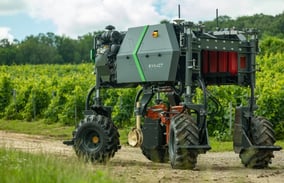
Exxact Robotics, a subsidiary of Exel Industries, aims to address the specific issues of viticulture as well as field crop activities with its autonomous agricultural vehicles. Driven by a control box coupled to a smartphone, the straddle carriers move autonomously and are able to perform soil work and spraying, in particular, on difficult-to-access areas such as narrow vineyards
The embedded system of your robot is the factor that will animate your robot. We can call it the brain of your product. It allows your robot to function and especially to evolve infinitely.
In order to determine the global structure of your software, you must start with the users’ needs while taking into account the hardware components selected beforehand.
To succeed in the design of your embedded system, you must keep in mind the architecture of your mobile robot as well as the functionalities that are expected.
Before launching into complex frameworks, your software must be able to drive your robot as well as the information from the sensors.
We invite you to read this article to help you choose the solutions that will build your embedded software.
💡Inspiring focus: Skypods, the climbing robots from Exotec
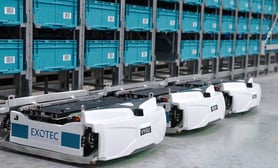
1st French industrial unicorn, Exotec has achieved technological success with Skypods robots. They allow 3D movement in warehouses thanks to their Astar management software which guides them in their movement and prioritization of orders in real-time
Mathematical models feed the code used to program your robot and thus provide it with the instructions it needs to perform the tasks it is asked to do.
Beyond the development, mathematics will allow the design of algorithms and automaton rules necessary for its proper functioning, for example:
There are different programming languages that are used to feed the code: JavaScript, Python, C and C++ and Matlab
💡Inspiring Zoom: Buddy, the intelligent personal robot from Blue Frog Robotics
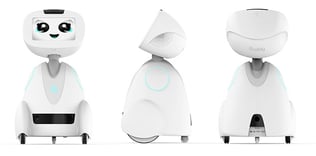
One of the major players in social robotics in Europe, Blue Frog Robotics has designed Buddy, the Emotional Companion robot. Designed to interact with humans, its open and scalable platform. Thanks to its development tools, Buddy can be used for many purposes. A true daily companion, he is able to assist, welcome, educate or even entertain those around him
Now that you know the importance of the 4 skills necessary for the viability of your robot, ensure that they communicate well with each other and create a real fusion.
For your robot to be efficient and evolve optimally in its environment, the choice of its technical elements. The way they communicate should not be chosen randomly. At the risk of having real impacts on safety and efficiency.
It is also necessary to integrate into your design phase the consideration of the standards to be respected those will apply according to the environment in which it will evolve as well as the people with whom it will be brought to interact.
Throughout the project, carry out tests. They will secure your project, refine your choices, and guide you in the right direction. Testing is the key!
Then, as we have seen, a robotics project requires many different skills. So don’t hesitate to add to your skills and get support.
We invite you to discover our article: How to secure the outsourcing of an innovative project?
Un peu de lecture
Des articles, des podcasts, des webinars… et surtout des conseils pratiques ! En bref, une collection de ressources pour mener à bien votre projet.